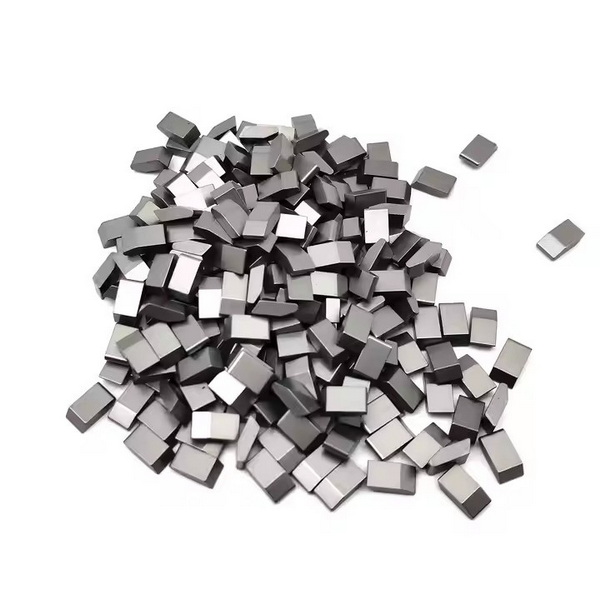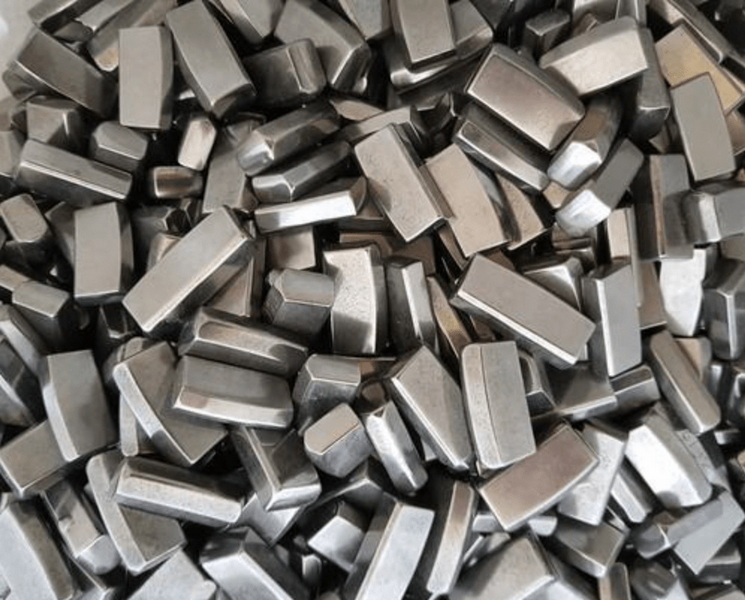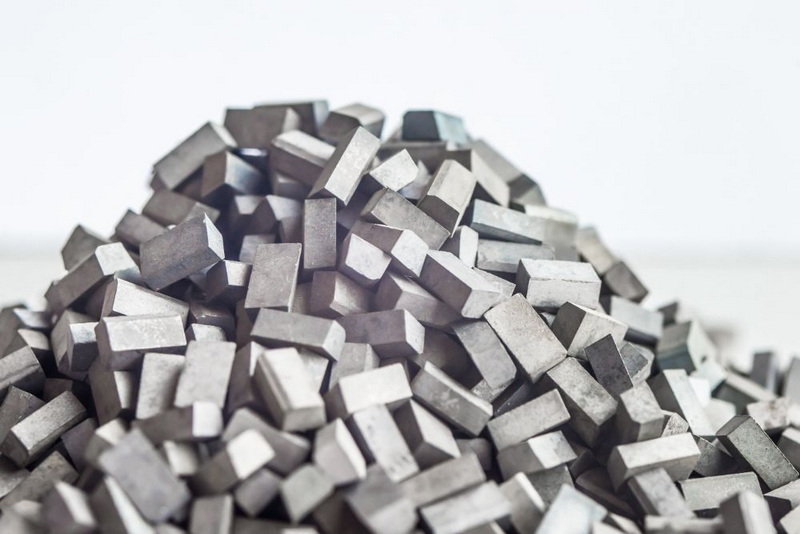Content Menu
● Understanding Tungsten Carbide
>> Properties of Tungsten Carbide
● Natural Sources of Tungsten
>> Mining Locations
● Industrial Production of Tungsten Carbide
>> Manufacturing Process
● Where to Find Tungsten Carbide Products
>> Industrial Suppliers
>> Cutting Tool Manufacturers
>> Jewelry Stores
>> Specialty Retailers
● Applications of Tungsten Carbide
>> Manufacturing and Machining
>> Mining and Construction
>> Aerospace and Aviation
>> Oil and Gas Industry
>> Medical Field
>> Consumer Products
● Recycling and Sustainability
>> Where to Find Recycled Tungsten Carbide
● Conclusion
● FAQ
>> 1. What makes tungsten carbide so special?
>> 2. Can I find tungsten carbide in nature?
>> 3. Is tungsten carbide expensive?
>> 4. Can tungsten carbide be recycled?
>> 5. Where can I buy tungsten carbide jewelry?
● Citations:
Tungsten carbide, a remarkable compound known for its exceptional hardness and durability, has become an indispensable material in various industries. From cutting tools to jewelry, this versatile substance finds applications in numerous fields. In this comprehensive guide, we'll explore the various sources and locations where you can find tungsten carbide, its properties, and its wide-ranging applications.

Understanding Tungsten Carbide
Before delving into where to find tungsten carbide, it's crucial to understand what it is and why it's so valuable. Tungsten carbide is a chemical compound consisting of equal parts tungsten and carbon atoms[3]. It's renowned for its extraordinary hardness, which is second only to diamond on the Mohs scale, ranking between 9 and 9.5[6].
Properties of Tungsten Carbide
Tungsten carbide boasts several remarkable properties that make it highly sought after:
1. Extreme hardness and wear resistance
2. High density (about twice that of steel)
3. Excellent heat resistance
4. High electrical conductivity
5. Corrosion resistance
These properties contribute to its longevity and make it an ideal material for various applications across different industries[1][2].
Natural Sources of Tungsten
While tungsten carbide itself is not found naturally, its primary component, tungsten, is a naturally occurring element. Tungsten is relatively rare, with only about 1.25 grams found in every 1000 kilograms of the Earth's crust[6]. It's believed to have been formed through supernova explosions.
Mining Locations
Tungsten is primarily mined from two types of ore deposits:
1. Wolframite ((Fe,Mn)WO4)
2. Scheelite (CaWO4)
The largest deposits of tungsten are found in:
- China
- Vietnam
- Russia
- Bolivia
- Austria
Industrial Production of Tungsten Carbide
Since tungsten carbide doesn't occur naturally, it must be synthesized. The production process involves several steps:
1. Mining and processing of tungsten ore
2. Conversion of tungsten ore to tungsten metal powder
3. Mixing of tungsten powder with carbon
4. Heating the mixture to high temperatures
Manufacturing Process
Tungsten carbide is typically produced by heating tungsten metal and carbon to temperatures between 1400°C and 2000°C[3]. Alternative methods include:
1. A lower-temperature fluid bed procedure using tungsten metal or blue WO3 with a CO/CO2 mixture and H2 between 900°C and 1200°C[3].
2. Heating WO3 with graphite at 900°C or in hydrogen at 670°C, followed by carburization in argon at 1000°C[3].

Where to Find Tungsten Carbide Products
Now that we understand how tungsten carbide is produced, let's explore where you can find products made from this remarkable material.
Industrial Suppliers
Many industrial suppliers specialize in tungsten carbide products. These suppliers cater to various industries and offer a wide range of tungsten carbide items, from raw materials to finished products. Some well-known suppliers include:
1. Zhongbo
2. Sandvik Coromant
3. Mitsubishi Materials
4. Ceratizit
These suppliers often have online catalogs and can provide custom solutions for specific industrial needs.
Cutting Tool Manufacturers
Given tungsten carbide's exceptional hardness and wear resistance, it's extensively used in cutting tools. You can find tungsten carbide cutting tools from manufacturers such as:
1. zhongbo
2. Walter Tools
3. Tungaloy
4. Seco Tools
These companies offer a wide range of carbide cutting tools, including drills, milling cutters, and inserts[4].
Jewelry Stores
Tungsten carbide has gained popularity in the jewelry industry due to its scratch-resistant properties and sleek appearance. Many jewelry stores, both online and brick-and-mortar, now offer tungsten carbide rings, bracelets, and other accessories. Some popular retailers include:
1. Iscar
2. Zales
3. Blue Nile
4. Amazon
Specialty Retailers
For more specialized tungsten carbide products, you might need to look into niche retailers. For example:
1. Sporting goods stores for tungsten carbide fishing weights or golf club components
2. Medical supply stores for tungsten carbide surgical instruments
3. Aerospace suppliers for specialized tungsten carbide components
Applications of Tungsten Carbide
Understanding the various applications of tungsten carbide can help you identify potential sources for specific products. Here are some key industries and applications where tungsten carbide is commonly used:
Manufacturing and Machining
In the manufacturing sector, tungsten carbide is primarily used for:
1. Cutting tools: Drills, milling cutters, saw blades, and other machining tools[4]
2. Wear-resistant parts: Components in high-stress environments[4]
3. Injection molding tools: Precision molds for plastic injection molding[4]
Mining and Construction
The mining and construction industries rely heavily on tungsten carbide for:
1. Drill bits: For penetrating tough materials like cement and asphalt[1]
2. Mining equipment: Wear-resistant components for harsh environments[2]
Aerospace and Aviation
In aerospace applications, tungsten carbide is used for:
1. Turbine blade coatings: To protect against wear and erosion[2]
2. Landing gear components: For durability and reliability[2]
Oil and Gas Industry
The oil and gas sector utilizes tungsten carbide in:
1. Drilling equipment: To protect against abrasive environments[2]
2. Valve stems and pump components: For longevity in high-pressure situations[2]
Medical Field
In medicine, tungsten carbide is used for:
1. Surgical instruments: Due to its corrosion resistance and performance enhancement properties[1]
2. Dental tools: For durability and precision
Consumer Products
Everyday items that may contain tungsten carbide include:
1. Ballpoint pen tips: For smooth writing and longevity[1]
2. Jewelry: Rings, bracelets, and other accessories[5]
3. Sports equipment: Golf club components, ski pole tips[7]
Recycling and Sustainability
As awareness of environmental issues grows, the recycling of tungsten carbide has become increasingly important. Tungsten carbide scrap is highly recyclable, making it a valuable material in the circular economy[7].
Where to Find Recycled Tungsten Carbide
1. Scrap metal dealers: Many specialize in tungsten carbide recycling
2. Industrial recycling centers: Often accept tungsten carbide tools and components
3. Specialized recycling companies: Focus on recovering and processing tungsten carbide
By choosing recycled tungsten carbide, you can contribute to sustainability efforts while still benefiting from the material's exceptional properties.
Conclusion
Tungsten carbide, with its remarkable properties and diverse applications, can be found in various forms across multiple industries. From industrial suppliers and cutting tool manufacturers to jewelry stores and specialty retailers, there are numerous sources for tungsten carbide products. Whether you're looking for raw materials, finished goods, or recycled components, understanding the properties and applications of tungsten carbide can guide you to the right sources.
As technology advances and new applications emerge, the demand for tungsten carbide is likely to grow. By knowing where to find this versatile material, you can harness its benefits for your specific needs, whether in manufacturing, construction, aerospace, or even personal use.

FAQ
1. What makes tungsten carbide so special?
Tungsten carbide is special due to its exceptional hardness (second only to diamond), high density, excellent wear resistance, and ability to withstand high temperatures. These properties make it ideal for applications requiring durability and precision[1][6].
2. Can I find tungsten carbide in nature?
No, tungsten carbide is not found naturally. It's a synthetic compound created by combining tungsten (which is mined from ores) with carbon under specific conditions[3].
3. Is tungsten carbide expensive?
While tungsten carbide can be more expensive than some other materials, its longevity and performance often make it cost-effective in the long run. Prices can vary depending on the specific product and application.
4. Can tungsten carbide be recycled?
Yes, tungsten carbide is highly recyclable. Many companies specialize in recycling tungsten carbide scrap, which can be reprocessed into new products[7].
5. Where can I buy tungsten carbide jewelry?
Tungsten carbide jewelry is widely available in both physical jewelry stores and online retailers.
Citations:
[1] https://www.tungco.com/insights/blog/5-tungsten-carbide-applications/
[2] https://www.linde-amt.com/resource-library/articles/tungsten-carbide
[3] https://scienceinfo.com/tungsten-carbide-properties-applications/
[4] https://www.sollex.se/en/blog/post/about-cemented-tungsten-carbide-applications-part-1
[5] https://eurobalt.net/blog/2022/03/28/all-the-applications-of-tungsten-carbide/
[6] https://eternaltools.com/blogs/tutorials/tungsten-carbide-an-informative-guide
[7] https://www.carbide-usa.com/top-5-uses-for-tungsten-carbide/
[8] https://www.refractorymetal.org/tungsten-carbide-uses-properties.html
[9] https://material-properties.org/tungsten-carbide/
[10] https://en.wikipedia.org/wiki/Tungsten_carbide
[11] https://www.britannica.com/science/tungsten-carbide
















